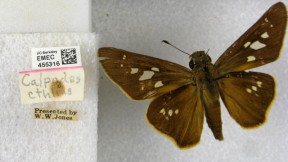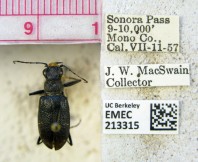
Scientists at UC Berkeley are asking the public to help with a problem that’s been bugging them – their century-old insect collection needs to be digitized.
UC Berkeley’s Essig Museum of Entomology has been gathering insect specimens since the 1880s. With 10,000 drawers filled with bugs, no one’s exactly sure how many there are.
“Nobody’s really counted them,” says collections manager Peter Oboyski, “but we estimate that we have over five million specimens in our collection.”
Most of those insects are preserved on pinheads, attached to small labels that say where and when they were collected. Those field notes hold a valuable record of California’s natural history, but the information has never been transcribed into a database.

“We estimate it would take decades, if not a hundred years, for us to go one-by-one and enter the data from every specimen,” Oboyski says.